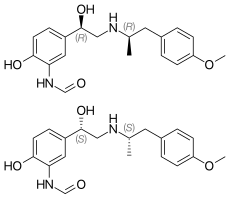The millions of people who consume green tea all over the world benefit from the catechins it contains. Catechins are a class of chemical compounds with anti-oxidant and anti-inflammatory properties, among other healthy ingredients. Researchers at the University of São Paulo's Public Health School (FSP-USP) have discovered that guarana (Paullinia cupana) is a worthy competitor, at least as far as catechins are concerned: the seeds of the tropical shrub, used in fizzy drinks that are among the most popular in Brazil, as well as in over-the-counter supplements, contain more than ten times the amount of catechins found in green tea.

Catechins
A clinical trial with healthy human volunteers has demonstrated that guarana is a rich source of catechins, which, when properly absorbed, reduce the oxidative stress associated with the development of neurodegenerative and cardiovascular disorders, as well as diabetes, cancer, inflammation and premature aging due to cell death, among other conditions harmful to health and wellbeing.
"Guarana has always been seen above all as a stimulant, especially by the international scientific community, because of its high caffeine content. We also found few Brazilian scientific studies that seek to identify other biological effects of guarana," said Lina Yonekura, the principal investigator for this research and currently an assistant professor at Kagawa University's School of Agriculture in Japan. "This pioneering assessment of the absorption and biological effects of its catechins in human volunteers should foster interest in guarana as a functional food on the part of scientists, the market, and society in general."
The paper with the results of the study is featured on the cover of the latest issue ofFood & Function, published by the Royal Society of Chemistry in the United Kingdom as one of the "Hot Articles in Food & Function 2016.
The month-long study was conducted in two stages. After selecting volunteers who were healthy but slightly overweight and with a moderately elevated risk of cardiovascular disease, the researchers measured baseline parameters on the first day and evaluated the same items again on day 15 after a the implementation of a controlled diet.
The participants were then asked to take guarana at home every morning before breakfast for the next fortnight. They were given bottles containing guarana seed powder and instructed to prepare a daily drink with the contents of one bottle (3 g of guarana powder) in 300 mL of water.
This procedure ensured that each participant acted as his or her own control. The researchers compared the same volunteers' blood tests at different times to avoid the influence of variability between individuals. The acute effect of guarana was measured one hour after the participants drank the solution on day 1 and day 15. The prolonged effect was assessed after overnight fasting on the same days.
The researchers assessed the extent to which guarana affected oxidative stress markers during the two-week intervention period. They also performed a detailed study to evaluate the subjects' absorption of catechins and their metabolites, as they had found no information in the scientific literature on the bioavailability of these compounds in guarana.
The oxidative stress markers included oxidation of low-density lipoprotein (LDL), popularly known as bad cholesterol. LDL is essential to an organism's proper functioning because it is the main particle that carries cholesterol to cells. Cholesterol is a structural component of all cell membranes and is used to manufacture steroid hormones (estrogen and testosterone). When oxidized, however, LDL causes atherosclerosis and increases the risk of cardiovascular disease. The tests performed by Yonekura's team showed an increase in oxidation resistance of the LDL in the blood samples taken from the volunteers after they drank guarana.
They also performed a comet assay, also called single cell gel electrophoresis (SCGE), a technique for quantifying and analyzing DNA damage in individual cells due to various factors, including oxidative stress. In this case, lymphocyte DNA in blood samples taken one hour after guarana intake was less damaged than expected when submitted to an oxidizing environment, indicating the presence of anti-oxidant substances or enhanced performance of the lymphocytes' enzymatic anti-oxidant system.
"All these markers depend on the presence of catechins in the bloodstream," Yonekura said. "The improvement in the parameters we assessed was associated with a rise in the concentration of plasma catechins after guarana intake, showing that guarana was indeed responsible for this effect."
Moreover, she went on, the guarana catechins strengthened the cells' native anti-oxidant enzymes, especially glutathione peroxidase, catalase, and superoxide dismutase, which combine to convert superoxide into peroxide and finally into water, protecting cells from the oxidative damage caused by their own metabolism of outside factors.
The tests showed increased glutathione peroxidase and catalase activity both shortly after guarana ingestion and on the following day.
"These results are exciting, suggesting that the bioavailability of guarana catechins is equal to or greater than that of green tea, cocoa and chocolate catechins," Yonekura said. "In fact, their bioavailability was sufficient to have a positive effect on plasma anti-oxidant activity, protect erythrocyte DNA, reduce plasma lipid oxidation, and increase anti-oxidant enzyme activity. We hope the results lead to heightened interest in guarana as the species is native to the Amazon, and Brazil is practically the only country that produces it on a commercial scale."




 Catechins
Catechins




